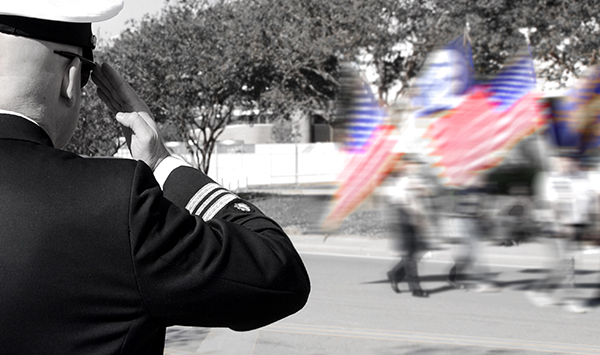
REMEMBER THE DIFFERENCE
Memorial Day: Celebrated the last Monday in May, Memorial Day is the holiday set aside to pay tribute to those who died serving in the military.
“Three years after the Civil War ended, on May 5, 1868, the head of an organization of Union Veterans — the Grand Army of the Republic (GAR) — established Decoration Day as a time for the nation to decorate the graves of the war dead with flowers. Maj. Gen. John A. Logan declared that Decoration Day should be observed on May 30. It is believed that date was chosen because flowers would be in bloom all over the country.”
The passage of the National Holiday Act of 1971 by Congress made it an official holiday.
Veterans Day: This federal holiday falls on November 11 and is designated as a day to honor all who have served in the military.
Veterans Day began as Armistice Day to honor the end of World War I, which officially took place on November 11, 1918.
“In 1954, after having been through both World War II and the Korean War, the 83rd U.S. Congress — at the urging of the veterans service organizations — amended the Act of 1938 by striking out the word “Armistice” and inserting the word “Veterans,” the site says. “With the approval of this legislation on June 1, 1954, November 11 became a day to honor American veterans of all wars.”
For nearly 150 years, Americans have gathered in late spring to honor the sacrifice of those who have given their lives in service to their country. What began with dozens of informal commemorations of those killed in the Civil War has grown to become one of the nation’s most solemn and hallowed holidays.

Memorial Day has become the traditional kick off of summer but the holiday has a much more significant purpose.
Memorial Day, observed on the last Monday of May, commemorates the men and women who died while serving in the military. Among its traditions are ceremonies to honor those who lost their lives in service, with many people visiting cemeteries to place American flags on grave sites.
A national moment of remembrance takes place across the country at 3 p.m. local time.
The purpose of Memorial Day is sometimes confused with Veterans Day. According to the Department of Veterans Affairs, Veterans Day – commemorated on Nov. 11 each year – honors all those who have served in the U.S. military during times of war and peace. Armed Forces Day, which falls on May 20 each year, recognizes those who are currently serving in the military.
History of Memorial Day
Memorial Day traces its roots to the tradition of Decoration Day, a time for the nation to decorate the graves of the war dead with flowers. The first declaration of Decoration Day occurred on May 30, 1868, when Major Gen. John Logan declared the day would be a time to recognize those who lost their lives in the Civil War.
The first large Decoration Day was held at Arlington National Cemetery that year. The ceremonies included mourning draping around the Arlington mansion of former Confederate Gen. Robert E. Lee. Gen. Ulysses S. Grant presided over the ceremonies, which included speeches, children from the Soldiers’ and Sailors’ Orphan Home and members of the Granddaughters of the American Revolution placing flowers on both Union and Confederate graves.
The Arlington tradition was built on longstanding ceremonies held throughout the South. Once of the first occurred in Columbus, Miss. on April 15, 1866, when a group of women decorated the graves of Confederate soldiers who died at the battle of Shiloh. Upon seeing the undecorated graves of Union soldiers who died in the battle, the women placed flowers at those headstones as well.
Several cities currently claim to be the birthplace of Memorial Day, including Macon and Columbus, Georgia, Richmond, Virginia, Boalsburg, Pennsylvania, Waterloo, New York and Carbondale, Illinois.
Memorial Day continued to be celebrated at local events until after World War I, which it was expanded to honor those who died in all American wars. In 1971, Memorial Day was declared a national holiday by an act of Congress, though it is still often called Decoration Day. It was then also placed on the last Monday in May, as were some other federal holidays.
In 2000, Congress passed “The National Remembrance Act,” which encourages all Americans to pause wherever they are at 3 p.m. local time on Memorial Day for a minute of silence to remember and honor those who have died in service to the nation.




